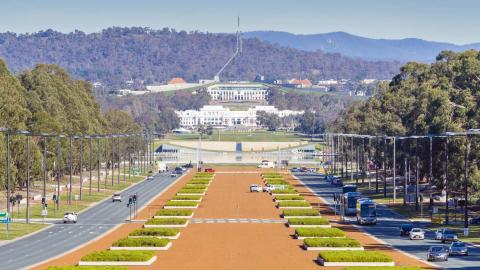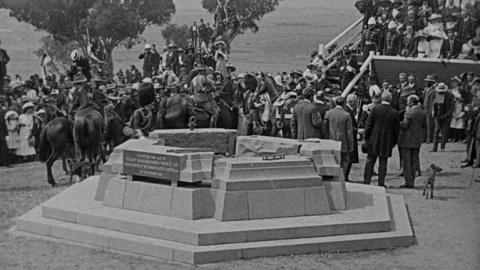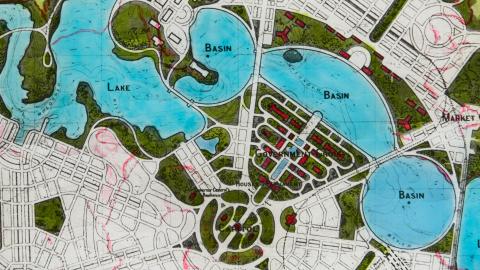

Crowd of 25,000 attend Canberra Week Procession, 1974
During the Centenary of Canberra year, the NFSA’s TV Unit looks at our holdings of Canberra’s first commercial television station, CTC 7 (now Southern Cross Ten). In working through the news collection we discover some gems that highlight Canberra’s hidden or forgotten history.
Courtesy of Southern Cross Austereo. NFSA: 64644
Note: The audio on the excerpt is location sound only.
On Saturday 16 March 1974 an enthusiastic crowd of 25,000 people turned out to watch the Canberra Week Procession. It was the first parade held in the nation’s capital since 1966. Thirty floats plus bands, marching girls and sporting and community groups left Gordon Street in the city, wound their way around London Circuit, across Northbourne Avenue to Electricity House. Vintage cars transported the 20 Canberra Day Princess finalists (the eventual winner was Gayle Sheridan of Downer).
A highlight of the procession was the Canberra Children’s Theatre float featuring Alexander Bunyip. It promoted the theatre company’s upcoming production of The Monster That Ate Canberra at the Playhouse from 6-10 May 1974.
The National Capital Development Commission (NCDC) created an air of mystery about the subject of their float. They placed a series of classified ads in The Canberra Times during Canberra Week culminating in a cryptic announcement of the annual meeting of the Lower Molonglo Gryphon Gliding and Hunting Club and advising members to ‘bring a big stick’ (The Canberra Times, 18 March 1974). All was revealed on the day with the delivery of Walter’s Burly Gryphon.
Stars of the procession were popular television icons of the day, Aunty Jack and Humphrey B Bear. Attended by Thin Arthur and Kid Eager, Aunty Jack left the procession at Canberra’s Civic Square to be crowned the 1974 Queen of Canberra by Member for Canberra, Kep Enderby. His coronation speech (sadly not included in the surviving footage) stated his desire to rename Canberra ‘South Wollongong’, and to make it a light industrial area!
This historic event was captured by a CTC-TV news cameraman. The footage was shot in colour, even though it would be another 12 months before colour television officially began in Australia. This camera footage and audio is not edited and was used to produce a CTC-TV news story which is not known to survive.
The National Film and Sound Archive of Australia acknowledges Australia’s Aboriginal and Torres Strait Islander peoples as the Traditional Custodians of the land on which we work and live and gives respect to their Elders both past and present.


